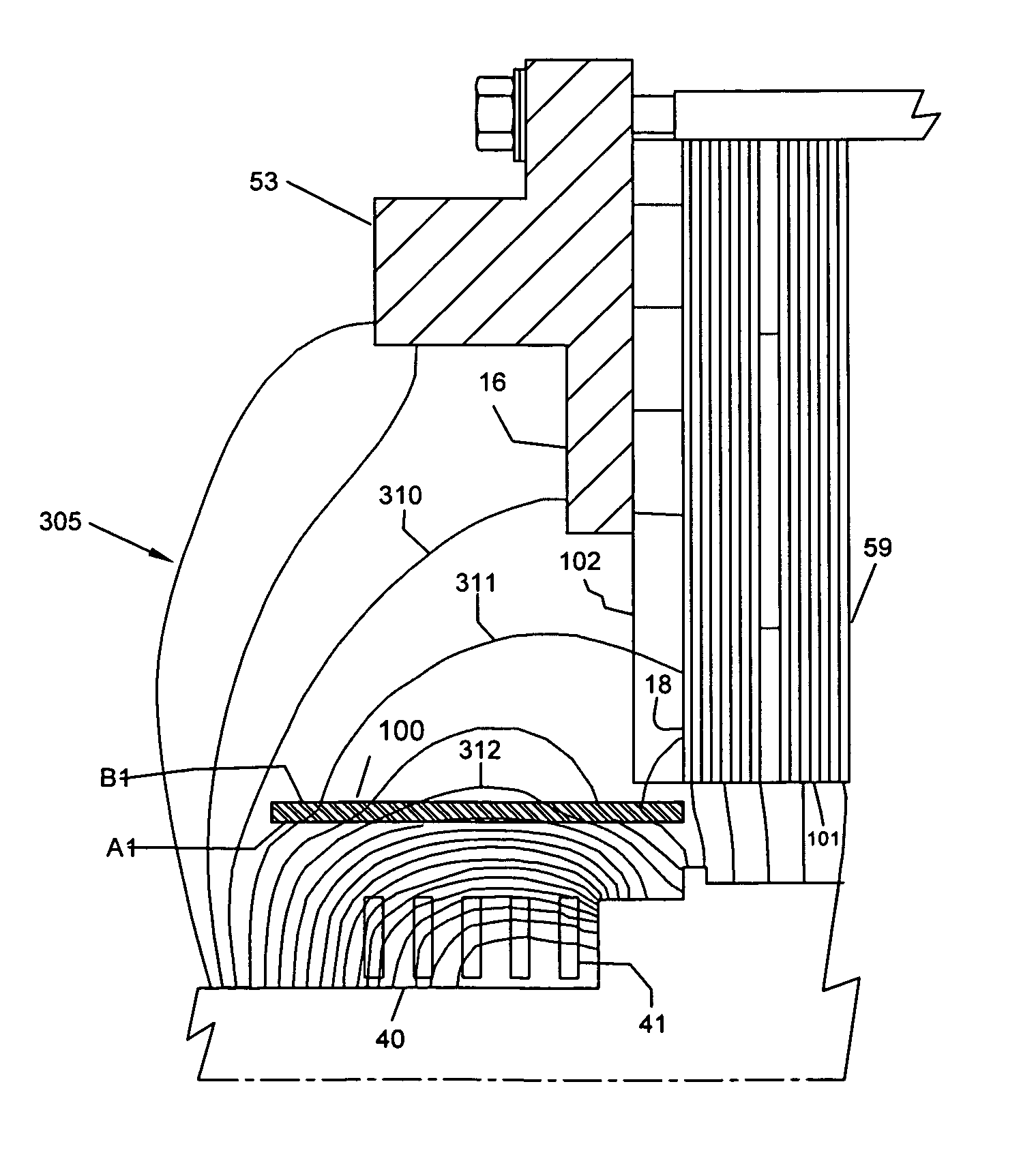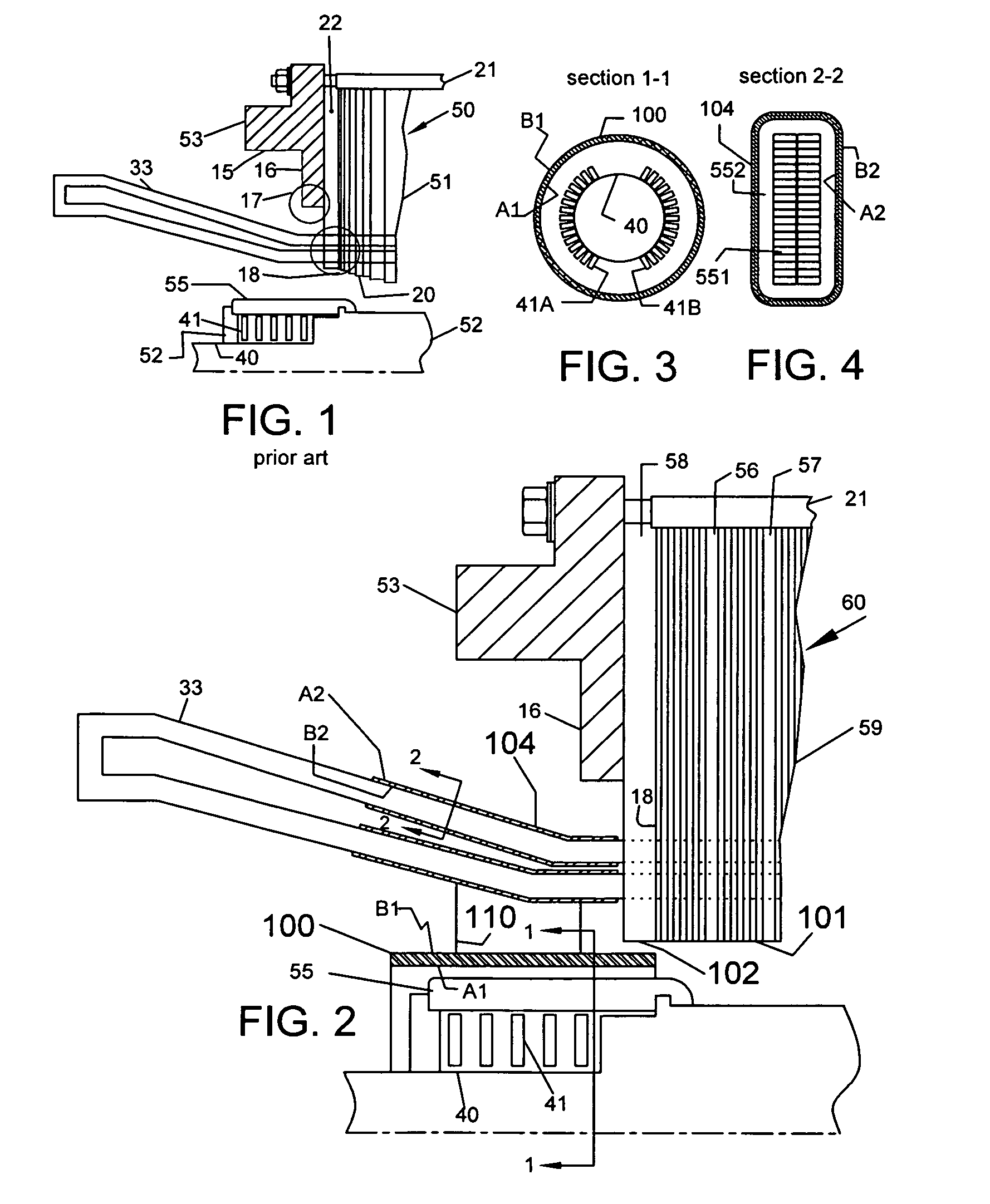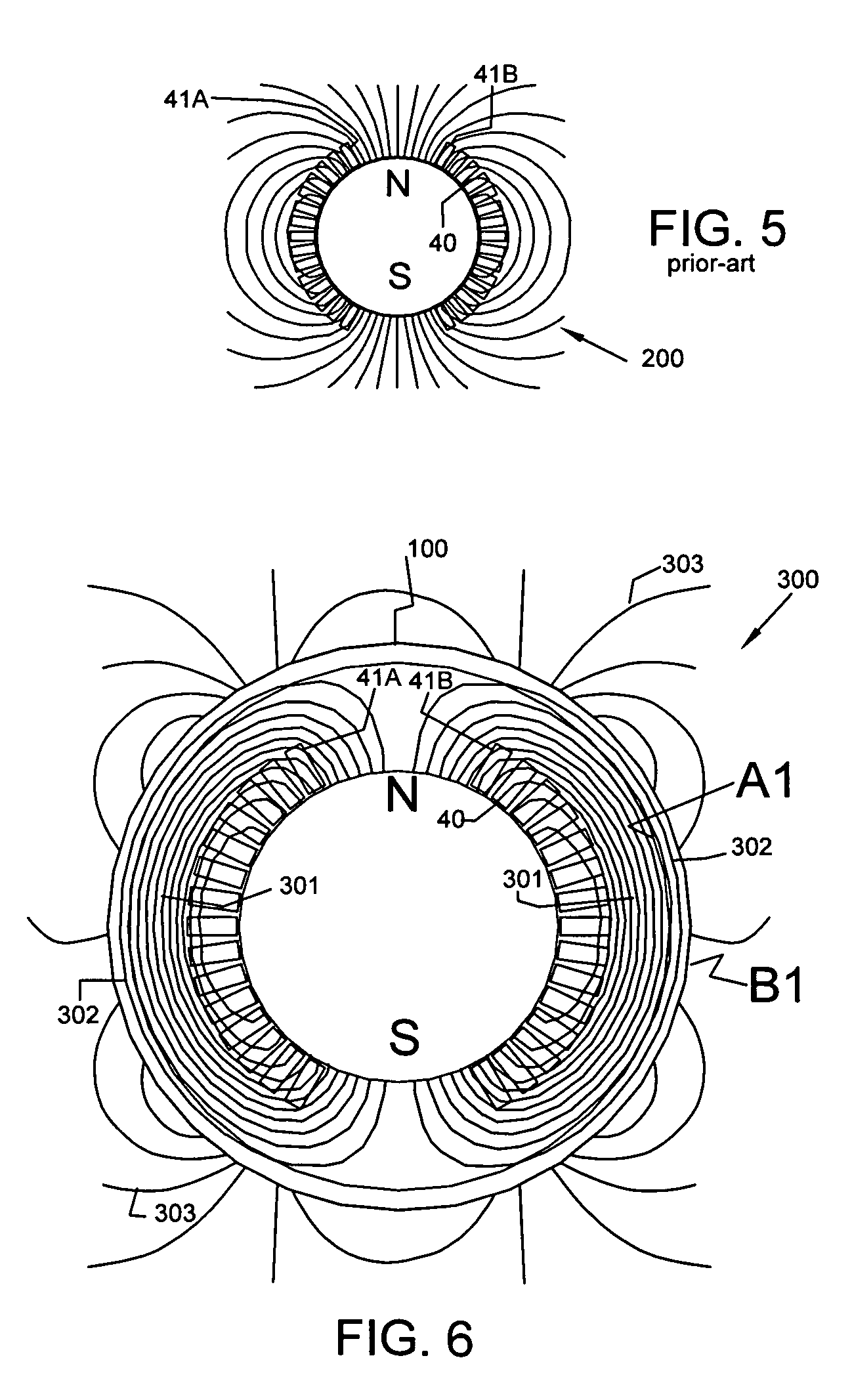Reducing the core-end heating in large power generators
a technology of large power generators and core-end heating, which is applied in the direction of dynamo-electric machines, electrical equipment, magnetic circuit shapes/forms/construction, etc., can solve the problems of increasing losses, core failure, and generators operating at lower power
- Summary
- Abstract
- Description
- Claims
- Application Information
AI Technical Summary
Benefits of technology
Problems solved by technology
Method used
Image
Examples
Embodiment Construction
[0030]FIG. 2 shows the core-end 60 with a first flux-shield 100 on rotating flux source 41 and a second flux shield 104 on stationary flux source 33 in accordance with the present invention. The goal of the flux shields 100, 104 is to ensure that only a fraction of the flux produced by respective flux sources is received by any of the multiple flux receivers. The end-lamination packages 101, 59 in the core end 60 are identical to those used in the main body of the generator. That is, generators in accordance with the present invention do not have and end-stepped laminations, thereby saving on cost. The end-lamination packages 101, 59 are cooled by outer vent duct 58 and inner vent ducts 56, 57 as in conventional generators. But the outer vent spacer 58 extends all the way up to the bore 102 of the core, thereby strengthening the support to the tooth tips and stator bars, preventing their rattling and breakdown.
[0031]FIG. 3 is a sectional view at 1-1 showing the cross-section of the ...
PUM
 Login to View More
Login to View More Abstract
Description
Claims
Application Information
 Login to View More
Login to View More - R&D
- Intellectual Property
- Life Sciences
- Materials
- Tech Scout
- Unparalleled Data Quality
- Higher Quality Content
- 60% Fewer Hallucinations
Browse by: Latest US Patents, China's latest patents, Technical Efficacy Thesaurus, Application Domain, Technology Topic, Popular Technical Reports.
© 2025 PatSnap. All rights reserved.Legal|Privacy policy|Modern Slavery Act Transparency Statement|Sitemap|About US| Contact US: help@patsnap.com



